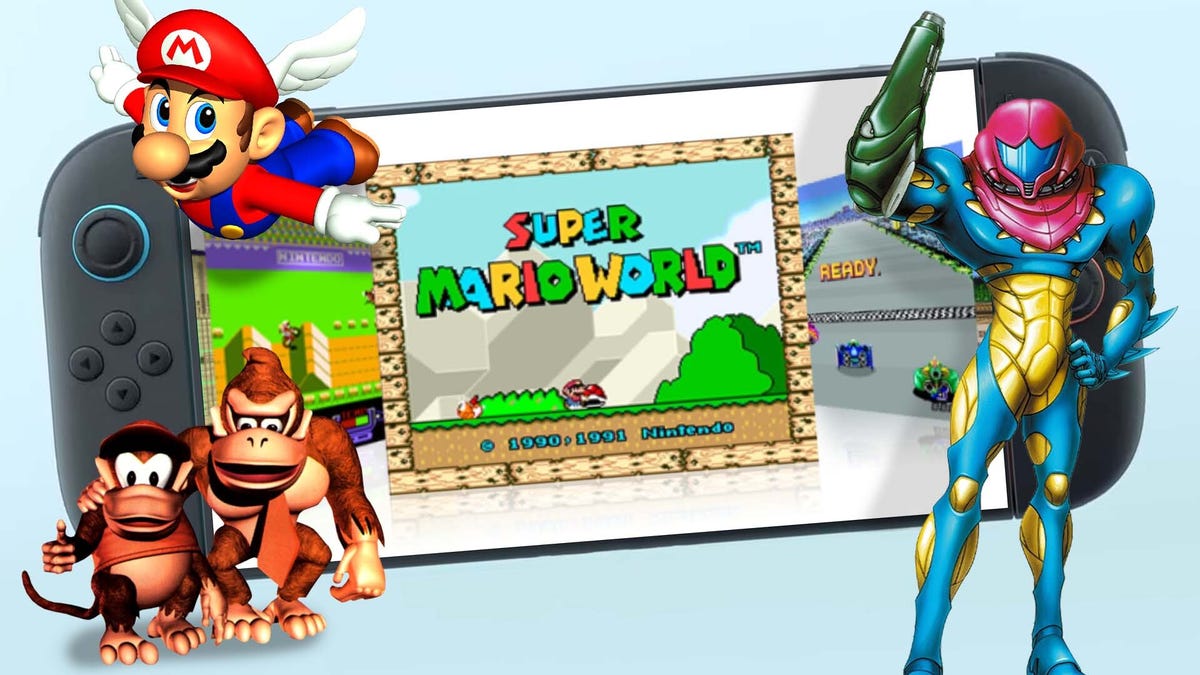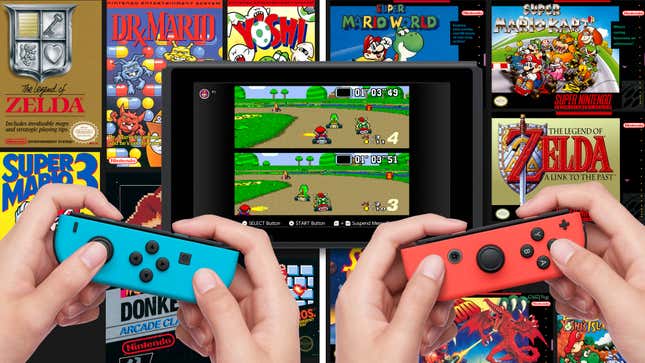
Nintendo stands out as the sole console manufacturer that requires users to pay for a monthly subscription in order to enjoy its classic game offerings, rather than allowing individual purchases. This approach should change with the upcoming Switch 2.
Switch Online launched in 2018 to mixed reviews, paralleling the subscription models of PlayStation and Xbox. Initially, it seemed reasonable for Nintendo to charge for online services, despite lacking features like native voice chat. As an added bonus, the subscription granted access to an expanding library of classic NES titles; for those who missed out on the NES Classic two years prior, it provided a nostalgic experience for just $20 annually.
Over time, however, the service has evolved, and so has its pricing. In 2019, Switch Online introduced a selection of Super Nintendo games, followed by Nintendo 64 and Sega Genesis titles in 2021, all housed in a separate Expansion Pack that raised the total yearly cost to $50. Recently, the library has expanded to include Game Boy, Game Boy Color, and Game Boy Advance titles, bringing the overall collection to more than 200 games spanning three generations of consoles and handheld devices.
It seems rather ludicrous that, in 2025, the only legal method to access these games is through an annual subscription. What began as a welcomed novelty has transformed into an increasingly frustrating situation. I find myself asking why I’m investing $50 just to introduce my child to The Legend of Zelda: Ocarina of Time — a game that I once could access freely.
Nintendo’s online offerings have often lagged behind those of its competitors. Yet it was a pioneer in allowing players to purchase digital versions of classic games for modern consoles. The Wii, released in 2006, featured the Virtual Console, which made NES classics like Donkey Kong, Mario Bros., and The Legend of Zelda available for digital purchase. I distinctly recall using my debit card for the first time in years, excited to download Military Madness and enjoy its captivating soundtrack once more.

The Virtual Console system was emulated by PlayStation’s PS1 classics, available first on the PSP and later on PlayStation 3, along with Xbox’s original titles featured on XBLA starting in late 2007. While the model was effective, it had one significant shortcoming on Nintendo’s platforms: users couldn’t carry their purchase history across different consoles. The Virtual Console on Wii was distinct from the one on 3DS, which was again different from the Wii U version. As a result, players were forced to buy the same titles repeatedly, marking a point of contention that highlighted Nintendo’s disconnect from modern gaming trends.
This frustration may have contributed to the initial optimism surrounding the launch of Switch Online. Finally, a unified library appeared to eliminate the need for purchasing Excitebike multiple times. However, it became evident that the Switch was an ideal opportunity to maintain the Virtual Console approach. With Nintendo promising backwards compatibility for the Switch 2, players would have in fact been able to keep their purchases of titles like StarTropics, Mario Kart 64, and Wonder Boy in Monster Land.
Instead, Nintendo resembles a relic of a bygone era, insisting on charging me $4 each time I wish to revisit the original Ninja Gaiden games, despite lacking the option to purchase and retain them permanently. Although Game Pass has reshaped the way players perceive value in Xbox, it still offers users the choice to buy games outright. Nintendo, once a frontrunner in digital game preservation, is now offering Switch Online, which feels like a remnant of a more frugal time for the company.
If Nintendo fails to reinstate the Virtual Console for the Switch 2, we might see an increase in frustration. There’s a possibility of a new $100 annual package featuring beloved GameCube titles that are unlikely to see remakes or ports, such as Mario Kart: Double Dash and Star Wars Rogue Squadron II: Rogue Leader. As a devoted fan driven by nostalgia, I may end up paying for it anyway. It doesn’t need to be like this.
Other developers, including Capcom and Konami, have demonstrated that creating high-quality collections of classic games for Switch is indeed feasible. Some have collaborated with companies like Digital Eclipse to integrate features such as auto-play options and extensive in-game archives that include scans of original manuals, developer notes, and concept art. Moreover, others have launched HD remasters, resembling the works by Square Enix with its Mana and Final Fantasy series.
“The presence of [Switch Online] doesn’t negate Nintendo’s ability to sell these titles, any more than Netflix makes Blu-rays obsolete,” stated former Kotaku editor Chris Kohler (currently with Digital Eclipse), who wrote in 2018. He also noted, however, that “Nintendo frequently shuns decisions that would make sense.” When the fan-favorite GoldenEye 007 was re-released in 2023, it was included as a complimentary update to the standalone Rare Replay collection on Xbox, while being confined to the subscription model on Switch. Time will tell whether Nintendo has made any significant improvements when the Switch 2 makes its debut later this year.
.









